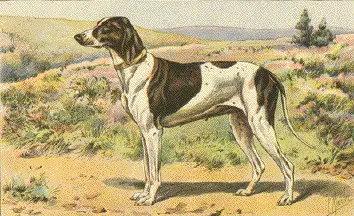With so many hundreds of dog breeds out there, it’s easy to forget that many breeds that were once popular and significant no longer exist at all. In other words, they are extinct breeds. But what happened to these breeds? Why did they go extinct? As you’ll soon find out, many of them were crossbred or absorbed into other familiar breeds that exist today, while others simply went extinct from either natural causes or a lack of interest in the breed.
Here are 25 interesting dog breeds that went extinct…
#1. Cordoba Fighting Dog
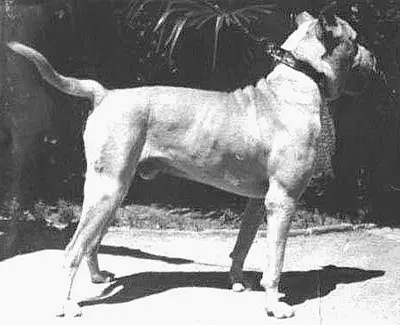
The Cordoba Fighting Dog.
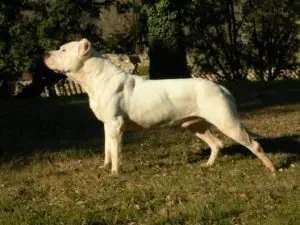
Dogo Argentino, the descendent of the Cordoba Fighting Dog.
Sadly, dog fighting was a common thing throughout human history, and that’s exactly what the Cordoba Fighting Dog was bred for. A large breed, weighing up to 120 lb, the Cordoba was pitted against other similar breeds. However, the breed also became well-liked as a hunting dog and guard dog. The Cordoba went extinct around the middle of the 20th century, but its descendant, the Dogo Argentino, lives on today.
#2. Blue Paul Terrier
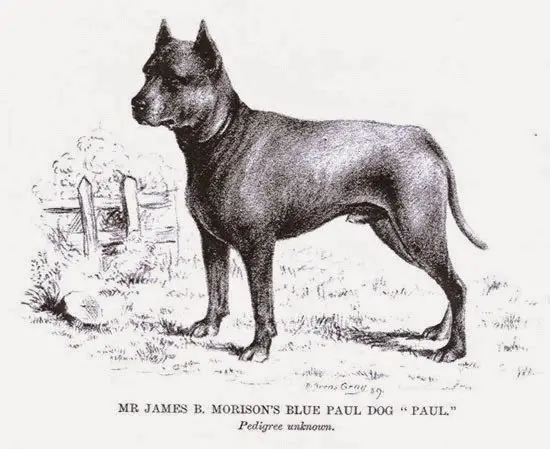
Illustration of the Blue Paul Terrier.
Another dog bred for fighting, the Blue Paul Terrier was allegedly brought to Scotland by a man named John Paul Jones, and that’s about the extent of what’s known of its origin. Some claim the breed was created by Scottish gypsies, but no one knows for sure. The breed was said to have an aggressive temperament, often fighting other dogs to the death, despite being a fairly small breed, only ranging from 35 to 55 lb. Most Blue Paul Terriers were in fact blue with white spots, however, some were red, and referred to as “Red Smuts.” The breed went extinct around the year 1900.
#3. Paisley Terrier
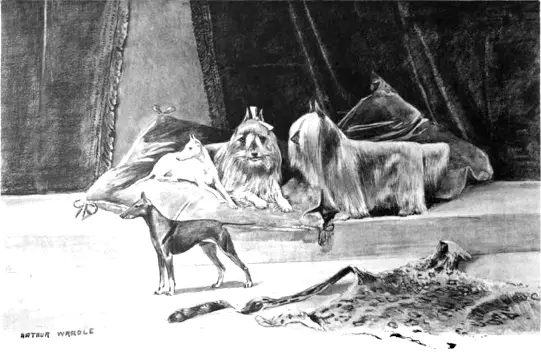
1894 illustration of two Paisley Terriers sitting next to a pair of English Terriers.
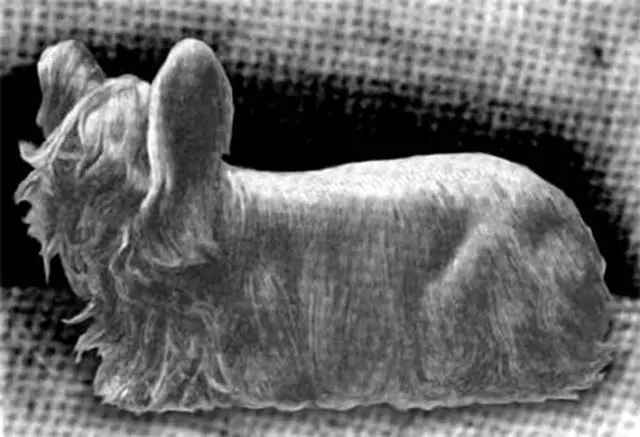
1903 photo of a Paisley Terrier.
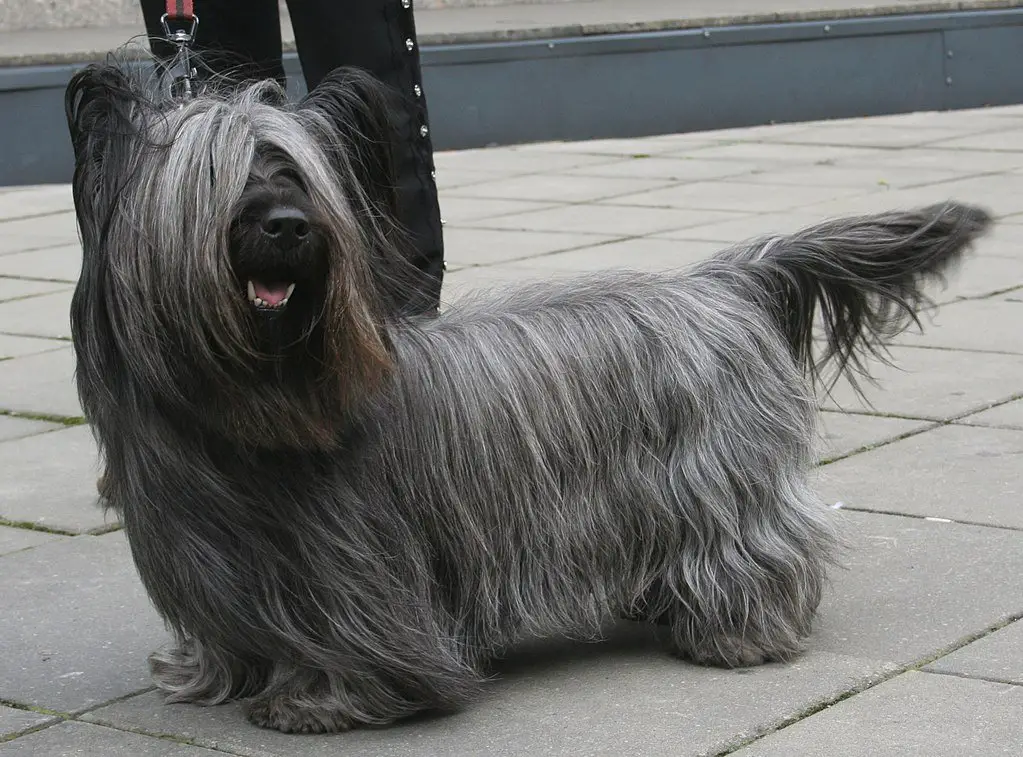
Skye Terrier, the progenitor of the Paisley Terrier.
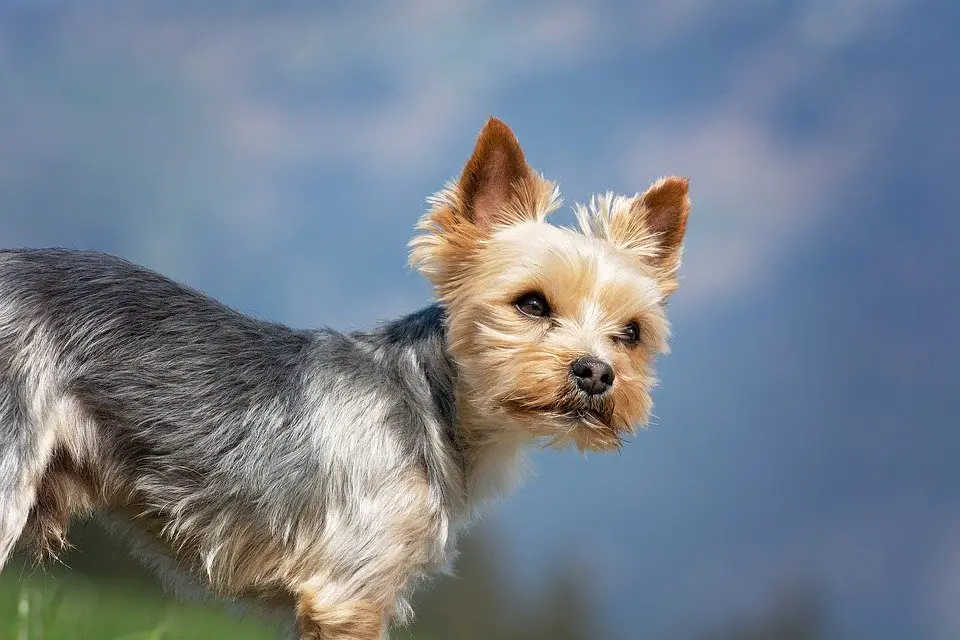
Yorkshire Terrier, the descendent of the Paisley Terrier.
Another breed that was once popular in Scotland, the Paisley Terrier was bred to be a show dog and a pet. The breed was another version of the extant Skye Terrier, which is said to be one of the most endangered native breeds in the United Kingdom, according to The Kennel Club. If you feel sad about this cute little breed no longer existing, you’ll be relieved to know they evolved into today’s Yorkshire Terrier.
#4. Talbot
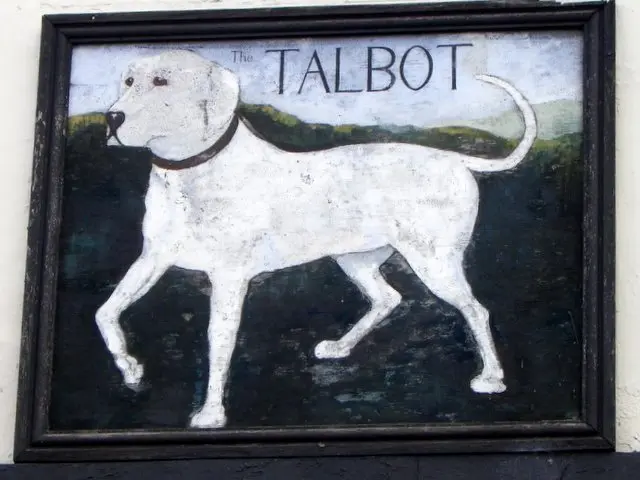
The Talbot was a popular mascot depicted on many signs. This was the sign for the Talbot Hotel.
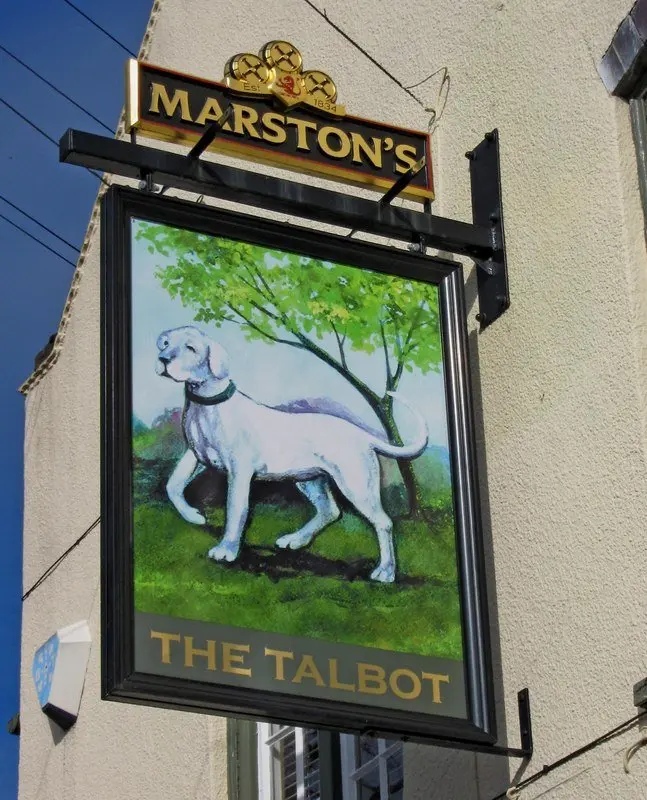
The Talbot Pub sign.
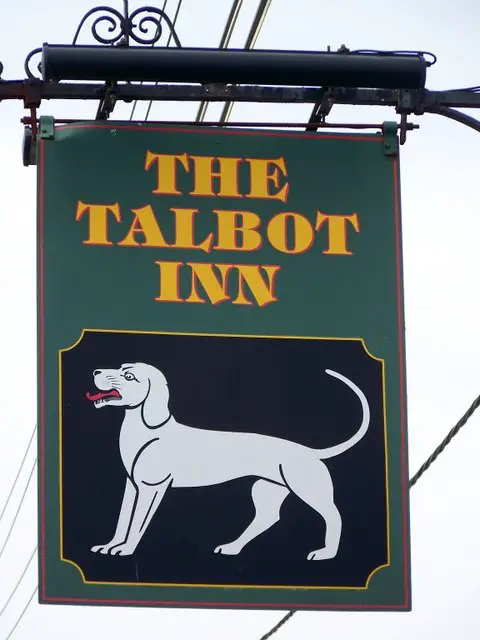
The Talbot Inn sign.
The Talbot breed is one of mysterious origin. Some believe the dog was brought to Normandy by William the Conqueror, while others attribute its origin to the clear connection between its name and John Talbot of the Talbot dynasty – the Earl’s of Shrewsbury – who was a fan of the breed. In fact, the Earl’s of Shrewsbury liked the breed so much, they used it as their mascot. Nevertheless, a high maintenance breed bred for hunting, people lost interest in the Talbot, and developed a preference for its easy-to-care-for descendants, the Beagle and the Bloodhound.
#5. Chien-gris
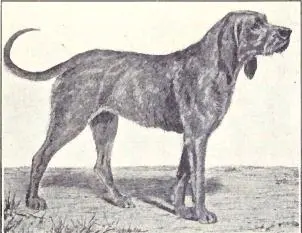
1915 illustration of a Chien-gris.
The Chien-gris originated during Medieval times as a scenthound, and was a member of the royal packs of France. It also went by the name Gris de Saint-Louis. King Charles IX, 1550–1574, said the hound was introduced to France by King Louis IX, 1226–1270, who discovered the breed while being held prisoner during the Crusades. Chien-gris was a common breed by the 16th century, but due to excessive mixed breeding, it became a rare breed by the 19th century, and eventually went extinct.
#6. Coton de Reunions
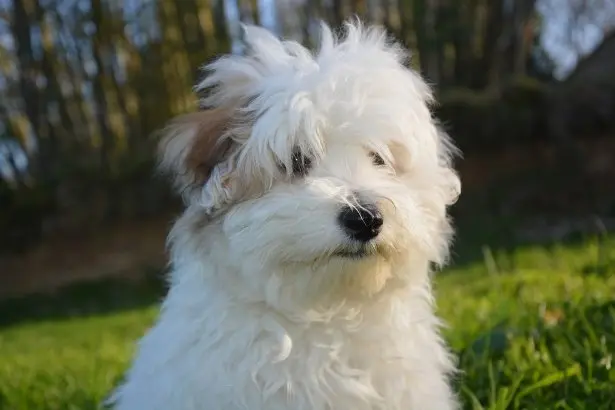
Coton de Tulear, the descendant of Coton de Reunions.
When sailors brought the Tenerife, a member of the Bichon family of dogs, to the Indian Ocean Islands in the 16th century, the breed evolved a long, cotton-like coat on the island of Reunion, and was thus referred to as “Coton de Reunions.” During the 17th century, the breed transformed into its descendant, Coton de Tulear, and thus went extinct. However, pirates brought Coton de Tulear to Madagascar around that time, and it eventually became “The Royal Dog of Madagascar.” To this day, the Coton is still considered the official dog of the nation.
#7. Dogo Cubano
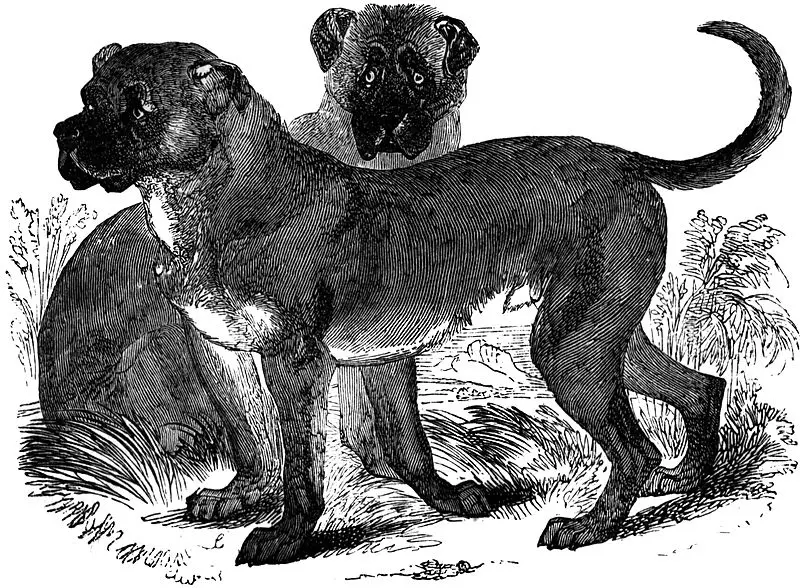
1885 illustration of Dogo Cubano, aka the Cuban Mastiff.
Originating centuries ago in Cuba, the Dogo Cubano may have been the most massive dog breed that’s ever existed. A Mastiff-type dog, the breed was said to average more than 300 lb. No one can verify this for certain since the breed is now extinct, but if it’s true, the Dogo Cubano might have been the heaviest dog ever – the current record holder is an English Mastiff named Aicama Zorba, weighing in at over 340 lb; however that’s a rare exception because most members of the breed top out at 250 lb. As you might imagine, the Dogo Cubano was a popular guard dog and fighting dog – it was even used to fight bulls. However, as dog fighting and bull fighting became increasingly unpopular, Dogo Cubano lost its purpose, and the breed disappeared sometime during the 1900s.
#8. Tahltan Bear Dog
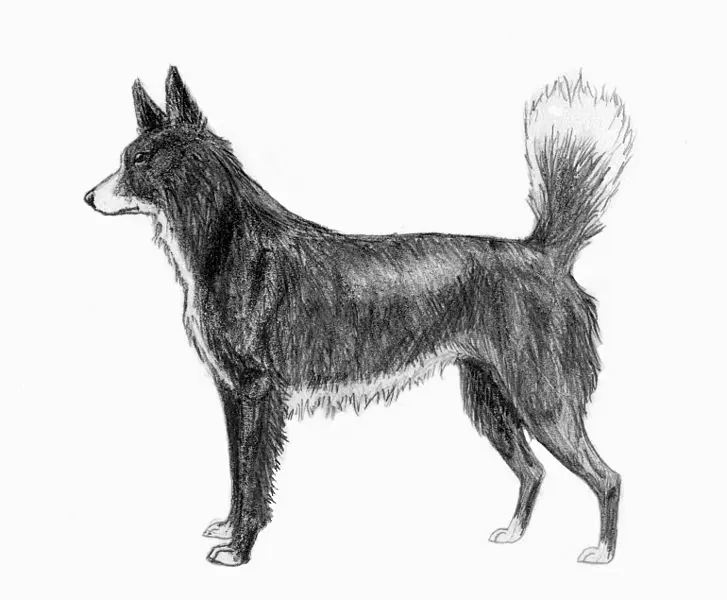
Illustration of a Tahltan Bear Dog.
There is some debate to whether or the Tahltan Bear Dog is actually extinct. The Canadian Kennel Club considers the breed extinct, a conclusion they came to in 1974; however, the Guinness Book of World Records considers the Tahltan Bear Dog the rarest breed in the world, based on reports of the breed still existing. The Tahltan originated from the Tahltan Indians of northwestern British Columbia, and grew in popularity up until the mid 1900s when they began to fade out. Even today, it is still common for people to report seeing, or even possessing a Tahltan Bear Dog – some people even try to sell them – but it is unlikely these dogs are real Tahltan Bear Dogs, not just mixed breeds that bear a resemblance.
#9. Tesem
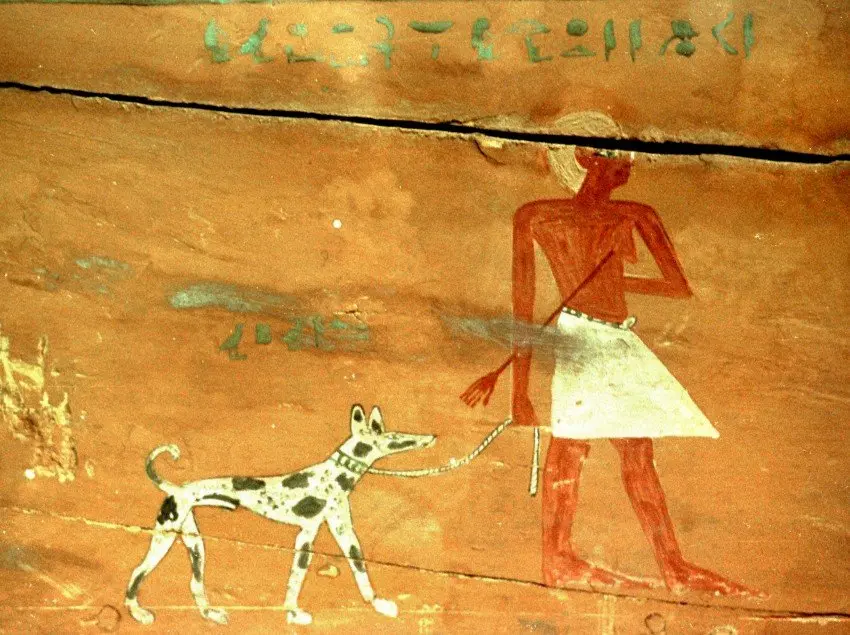
This painting on the side of a coffin that is more than 3000 years old, depicts Khou, a nobleman from Assiud, walking his Tesem dog, Meniou-pu.
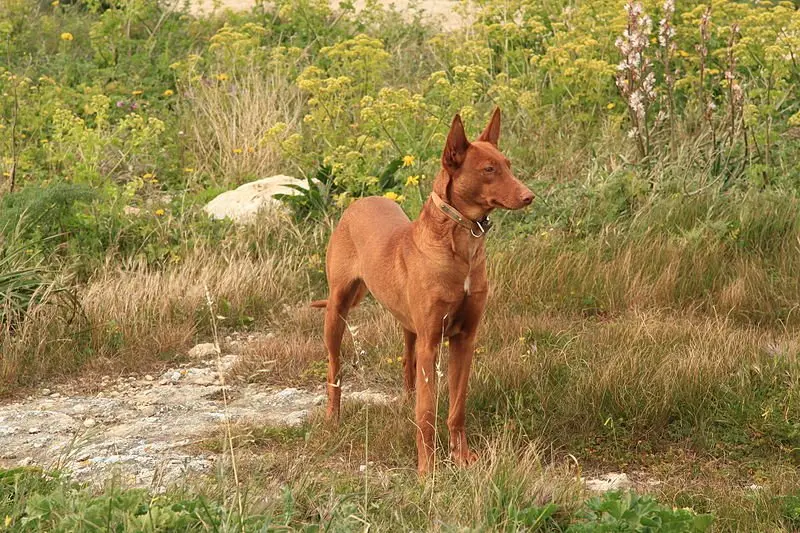
A modern day Pharaoh Hound, sometimes mistakingly referred to as a Tesem.
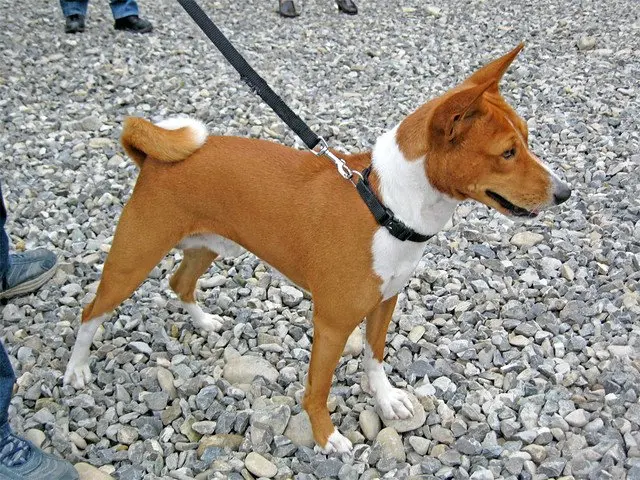
A modern day Basenji, believed to be the descendant of the Tesem dog.
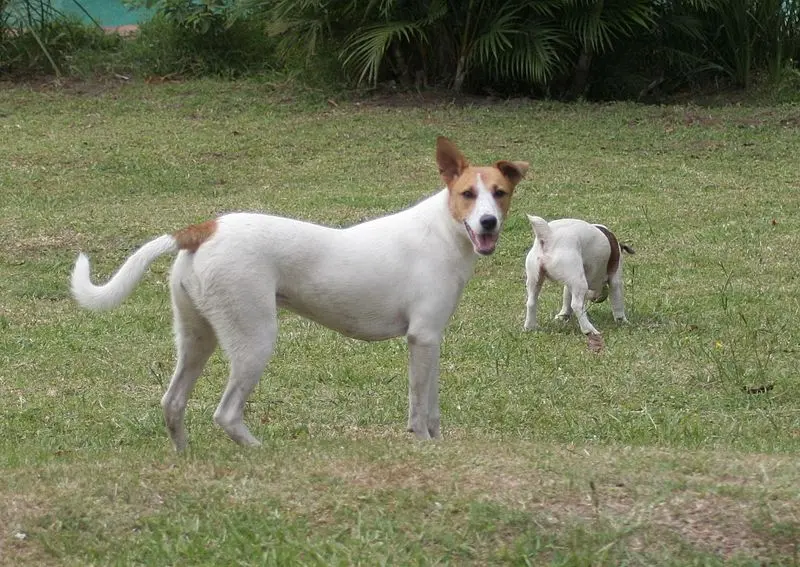
An Africanis dog. Another possible descendant of the Tesem breed.
If you’ve ever seen Egyptian hieroglyphics, then you’ve likely seen the Tesem. The name Tesem loosely translates to “hunting dog,” which is exactly what the ancient Egyptians used them for. They were also valued as guard dogs and companions. The earliest depiction of a Tesem dates back to 3200 BCE. The breed went extinct long ago, but its descendants are believed to be the Basenji and the Africanis. An extant breed that looks similar to the Tesem, called the Pharaoh Hound, is sometimes called a Tesem, but they are not the same.
#10. Russian Tracker
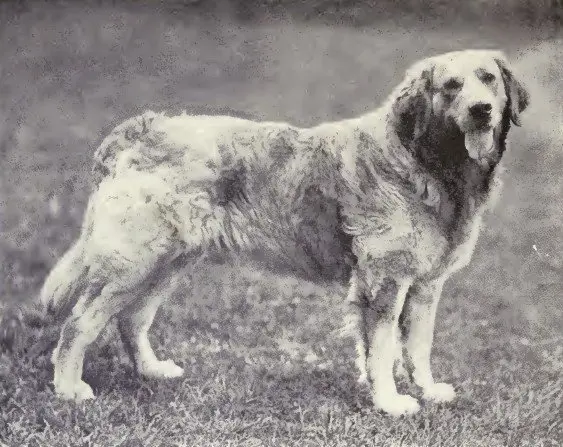
1915 photograph of a Russian Yellow Retriever, a close relative of the Russian Tracker, which some believe may have been the same breed.
The Russian Tracker, or Russian Retriever, is an extinct breed of dog that was around until the late 1800s. It was a large breed, standing over 2′ high at the withers, and weighing 100 lb or more, that was used to protect sheep by chasing away predators, including wolves. The Russian Tracker’s closest living descendant is one you’ve likely heard of, the Golden Retriever.
#11. Hare Indian Dog
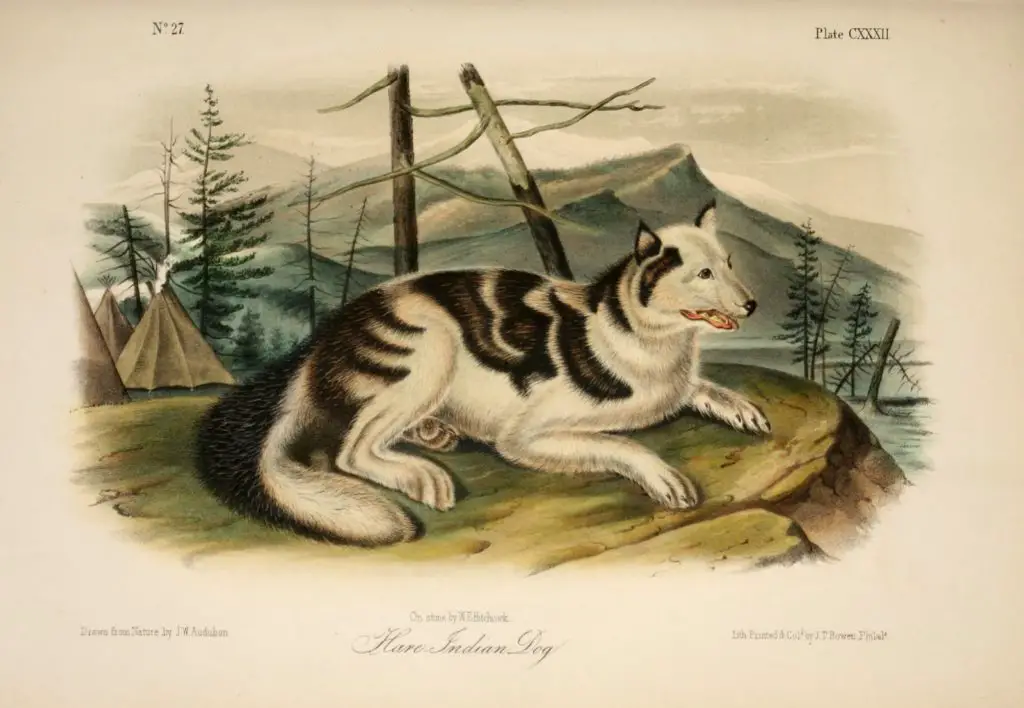
An illustration of a Hare Indian Dog, aka Makenzie River Dog, by John James Audubon and John Bachman, originally published between 1845-1848 in the three-volume series, The Viviparous Quadrupeds of North America.
The Hare Indian Dog was a breed first seen in northern Canada being used as a sled dog for the Hare Indian Tribe. No one knows exactly how or when the Hare Indian Dog was first bred, but it is theorized to be a mix of a Tahltan Bear Dog and other dog breeds that were brought to North America by Vikings. Another theory suggests the breed was mixed with coyote. Native Americans, however, believed the breed came from the Arctic fox. Regardless of where it came from, the Hare Indian Dog traveled all over North America and Europe until it eventually bred itself out of existence by mixing with so many other breeds.
#12. Turnspit Dog
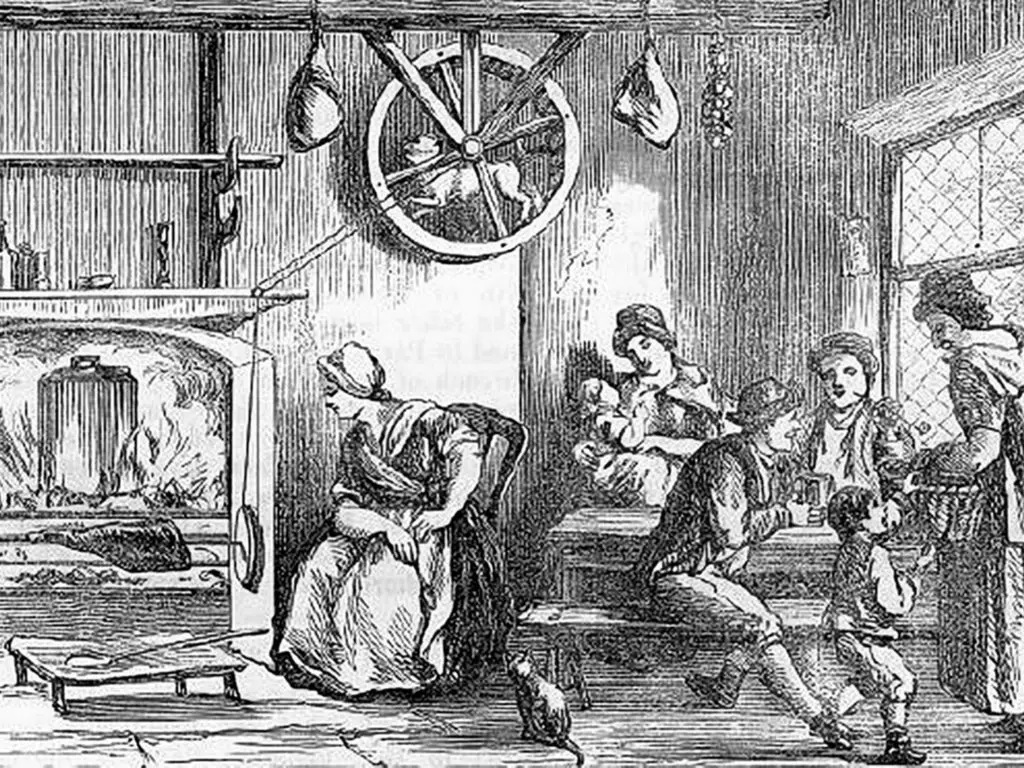
A Turnspit Dog can be seen in the background turning a large wooden wheel connected to a spit, as the family chats, and waits for dinner to finish cooking.
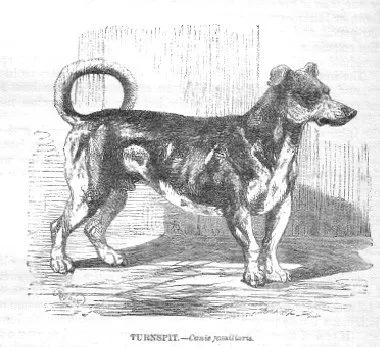
1853 illustration of a Turnspit Dog from Illustrated Natural History, by Rev JG Wood.
Odd as it might seem, the Turnspit Dog was a dog bred specifically to run on a wheel, called a turnspit, that would rotate a rotisserie. The breed was also referred to as “kitchen dog,” “cooking dog,” and the “vernepator cur,” which is Latin for “the dog that turns the wheel.” Sadly, the Turnspit Dog was truly viewed as a kitchen appliance, and despite being a popular household “item” in Great Britain for over two centuries, the breed went extinct when it was replaced by a cheap machines – clock jacks – that did the same job.
#13. Braque du Puy
The Braque du Puy originated in France during the 1800s. It is a member of the Braque family of dogs, which is the French word for Pointer. Despite being an attractive scent-hound and loyal companion, the breed just never reached the popularity of other Braques, and eventually faded away. Even though the Braque du Puy has been extinct since the 1970s, some people insist that it still exists today in remote parts of the world, and some breeders try to sell “Braque du Puys,” which are really just recreations of the breed, not members of the original bloodline.
#14. Toy Trawler Spaniel
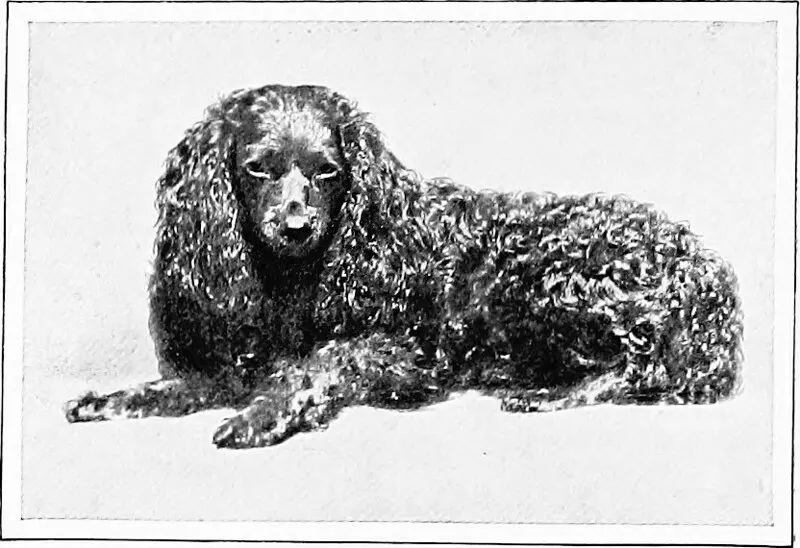
Picture of a Toy Trawler Spaniel published in 1907 in ‘The new book of the dog; a comprehensive natural history of British dogs and their foreign relatives, with chapters on law, breeding, kennel management, and veterinary treatment.’
The Toy Trawler Spaniel may have gone extinct around the 1920s, but a specimen of one is still preserved today at the Natural Museum of History at Tring. The breed was a descendant of the King Charles Spaniel, and was bred to be a toy dog and a show dog. Funny enough, this breed was also bred to brave and fierce, as those qualities were looked for in the show ring.
#15. Moscow Water Dog
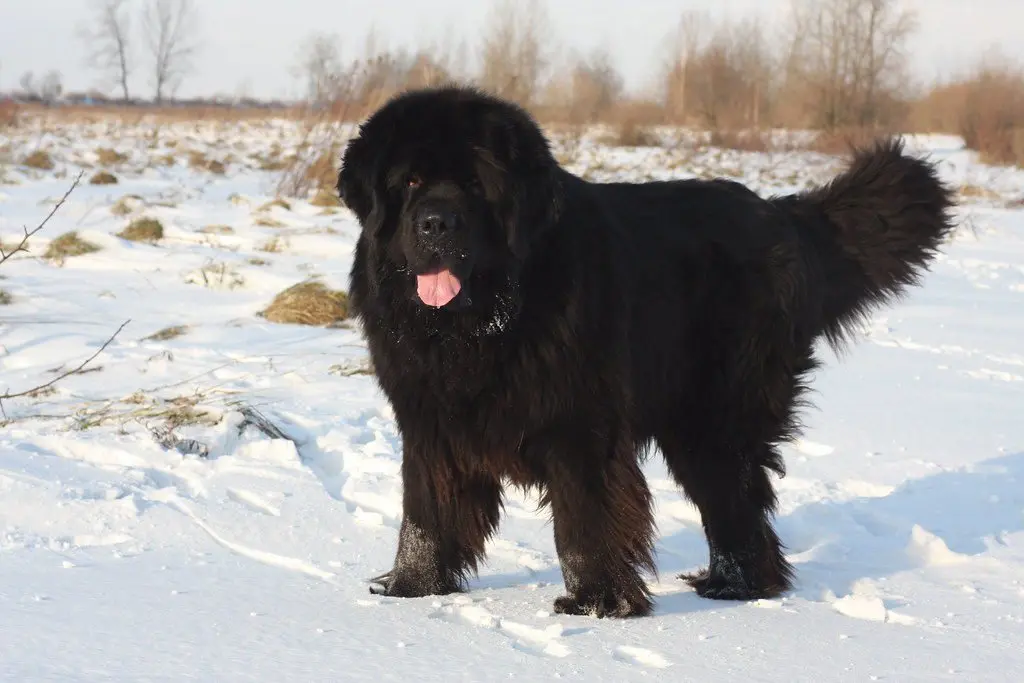
Photo of a Newfoundland, the closest relative of the Moscow Water Dog.
The Moscow Water Dog was a breed created by the Russian Navy in an attempt to make the perfect rescue dog. The dog needed to be an intelligent, large breed with a thick coat that could endure harsh weather and cold water. They mixed the Newfoundland with the Caucasian Shepherd Dog and the East European Shepherd, and were successful in creating the breed they sought. However, the Moscow Water Dog also had some unexpected traits that were not desirable. The breed was meant to rescue people, but the Russians accidentally created a highly aggressive breed that would rather bite a drowning victim than save them. The whole program was abandoned, and the Moscow Water Dog went extinct in the 1980s.
#16. Toy Bulldog
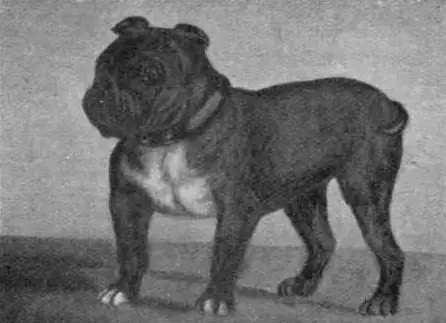
1903 illustration of a champion Toy Bulldog named Little Knot.
The Toy Bulldog, not to be confused with “Miniature Bulldogs,” is a breed that went extinct by the 20th century. The breed was somewhat of an experiment that never fully panned out. Firstly, breeders wanted to make the bulldog as small as possible, but this created health complications, and just didn’t work – even the tiniest bulldogs still produced regular size pups. Secondly, the breeders wanted to get the weight down to 20 lb or less, but could only do this through mixing the Toy Bulldog with French Bulldogs and English Bulldogs, which meant the resulting puppies were no longer pure Toy Bulldogs.
#17. Hawaiian Poi Dog
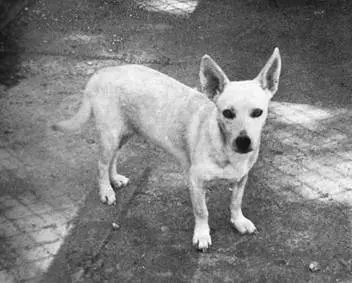
1969 photo of a female bred at the Honolulu Zoo in an effort to recreate the Hawaiian Poi breed.
The Hawaiian Poi Dog is one breed that had a particularly grim past. It was brought to Hawaii by Polynesian settlers where it was primarily used as food, as well as for cultural and religious rituals. As soon as westerners began to settle in Hawaii around the 19th century, the Hawaiian Poi Dog was mixed with several other breeds, and quickly went extinct.
#18. English Water Spaniel
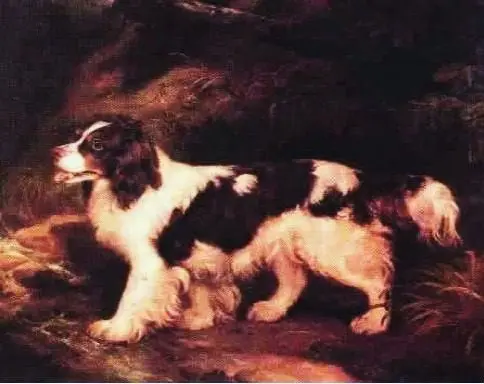
1815 painting of an English Water Spaniel by Ramsay Richard Reinagle.
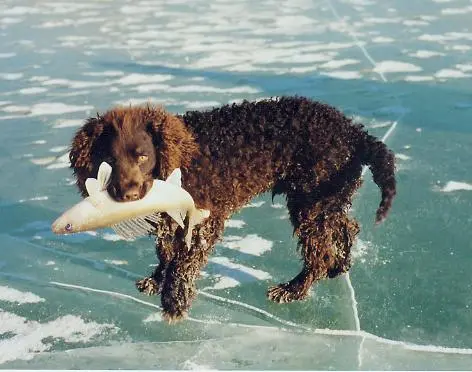
An American Water Spaniel, possible descendant of the English Water Spaniel, catching a fish.
The English Water Spaniel was a hunting breed that existed up until the 1930s. It was said to be as good at diving into water as a duck. The English Water Spaniel is also believed to be an ancestor of many modern breeds, such as the American Water Spaniel, the Field Spaniel, and the Curly Coated Retriever.
#19. Kurī
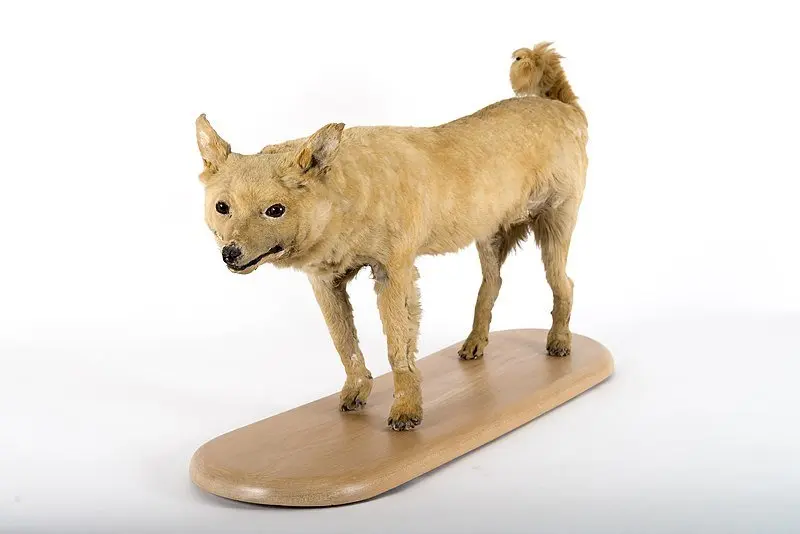
A stuffed and mounted Kurī at the Otago Museum in New Zealand.
Kurī was a small, white-haired, bark-less breed of dog that was brought to New Zealand in the 13th century by Polynesians on canoes. Like the unfortunate Hawaiian Poi Dog, another breed of Polynesian origin, the Kurī was primarily used as food. An English explorer named James Cook actually said he enjoyed eating the dog as much as lamb. It’s unclear when the breed went extinct, but it was probably some time around the 1800s. A couple stuffed specimens of the Kurī are kept on display at museums in New Zealand.
#20. Cumberland Sheepdog
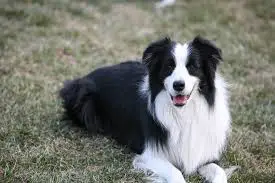
The Cumberland Sheepdog was most likely absorbed into the Border Collie breed (pictured above).
Lancelot Edward Lowther, 6th Earl of Lonsdale, said the Cumberland Sheepdog was his favorite breed, and claimed the breed had been in his family for more than 100 years. The Cumberland Sheepdog is believed to be the ancestor of the Border Collie and the Australian Shepherd. So why did the breed go extinct? The best guess is that it was absorbed into the Border Collie breed as it lost popularity during the end of the 19th century. It was around that time many people started referring to Cumberland Sheepdogs as Border Collies, so it would make sense that the two got mixed up until the less popular Cumberland disappeared.
#21. Bullenbeisser
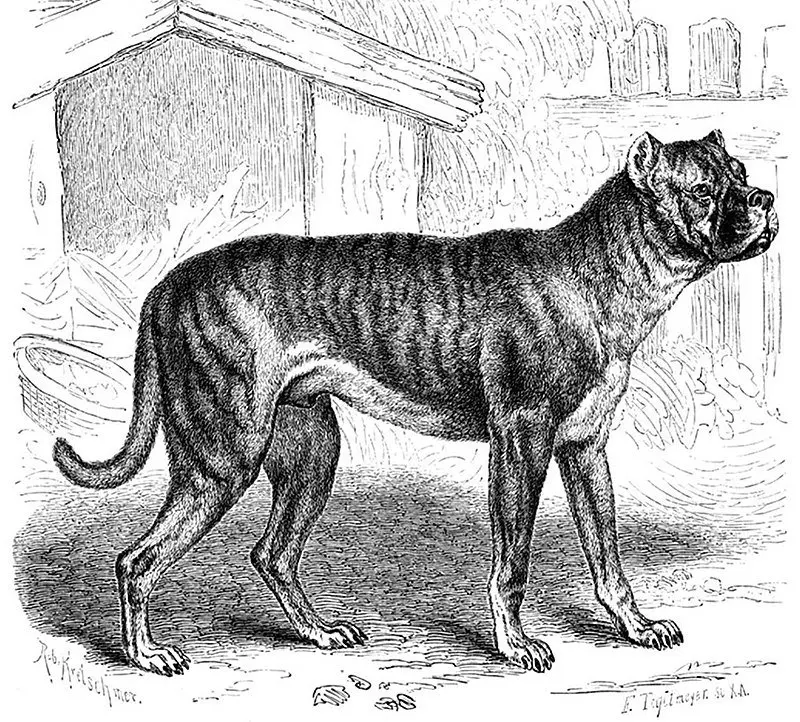
Engraving of a Bullenbeiser.
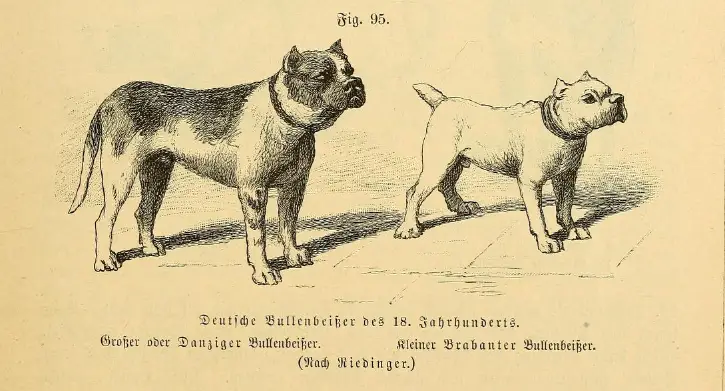
Illustration depicting two types of Bullenbeisers: the Danzig Type and the Barbanter type.
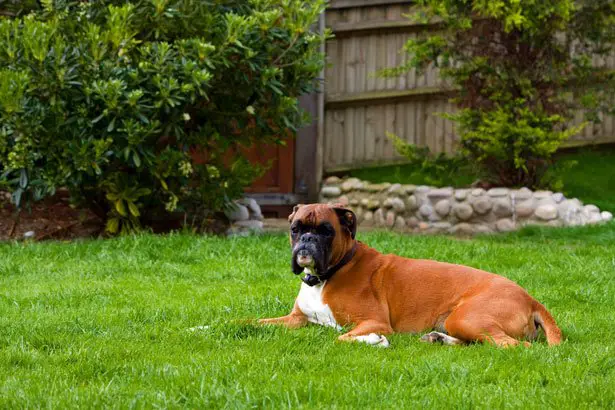
A modern day Boxer, the direct descendant of the Bullenbeiser.
The Bullenbeisser was a breed of German origin that lead to the creation of the modern day Boxer. Also known as the “German Bulldog,” the name Bullenbeisser means “bull-biter.” There was a similar breed at the same time with a slightly different name that meant “bear-biter,” and it is believed these breeds were in fact the same. In the late 1870s, the German Bullenbeisser was crossed with Bulldogs from England to make the Boxer, and the Bullenbeisser went extinct.
Trivia
The St. John’s Water Dog – ancestor of the Golden Retriever and Labrador Retriever – almost made this list, but in 2019 the breed was rediscovered. Before then, the breed was long thought to be extinct.
References:
EasyPetMD. Cordoba Fighting Dog. Retrieved from http://www.easypetmd.com/doginfo/cordoba-fighting-dog
Dog Breed Info. Blue Paul Terrier. Retrieved from https://www.dogbreedinfo.com/b/bluepaulterrier.htm
Wikipedia. Paisley Terrier. Retrieved from https://en.wikipedia.org/wiki/Paisley_Terrier
The Kennel Club. Skye Terrier. Retrieved from https://www.thekennelclub.org.uk/services/public/breed/display.aspx?id=3078
Ally McConnell (July 24, 2015). The Talbot Dog. Retrieved from http://www.wshc.eu/lacock/lacock-unlocked/our-favourite-documents/item/the-talbot-dog.html
Wikipedia. Chien-gris. Retrieved from https://en.wikipedia.org/wiki/Chien-gris
Coton de Tulear Club of America. History. Retrieved from http://cotonclub.org/history.html
EasyPetMD. Dogo Cubano. Retrieved from http://www.easypetmd.com/doginfo/dogo-cubano
Murray Lundberg. The Tahltan Bear Dog. Retrieved from http://www.everythinghusky.com/features/beardog.html
Worldly Dogs. Tesem. Retrieved from https://www.worldlydogs.com/tesem.html
Wikipedia. Russian Tracker. Retrieved from https://en.wikipedia.org/wiki/Russian_tracker
The Kitchen Sisters (May 13, 2014). Turnspit Dogs: The Rise And Fall Of The Vernepator Cur. Retrieved from https://www.npr.org/sections/thesalt/2014/05/13/311127237/turnspit-dogs-the-rise-and-fall-of-the-vernepator-cur
EasyPetMD. Braque du Puy. Retrieved from http://www.easypetmd.com/doginfo/braque-du-puy
Wikipedia. Toy Trawler Spaniel. Retrieved from https://en.wikipedia.org/wiki/Toy_Trawler_Spaniel
PetGuide.com. Moscow Water Dog. Retrieved from https://www.petguide.com/breeds/dog/moscow-water-dog/
Wikipedia. Toy Bulldog. Retrieved from https://en.wikipedia.org/wiki/Toy_Bulldog
Léo Azambuja. The Hawaiian Poi Dog. Retrieved from https://www.forkauaionline.com/hawaiian-poi-dog/
Wikipedia. English Water Spaniel. Retrieved from https://en.wikipedia.org/wiki/English_Water_Spaniel
Basil Keane (November 24, 2008). Story: Kurī – Polynesian dogs. Retrieved from https://teara.govt.nz/en/kuri-polynesian-dogs
EasyPetMD. Cumberland Sheepdog. Retrieved from http://www.easypetmd.com/doginfo/cumberland-sheepdog
Wikipedia. Bullenbeisser. Retrieved from https://en.wikipedia.org/wiki/Bullenbeisser
Wikipedia. St. John’s water dog. Retrieved from https://en.wikipedia.org/wiki/St._John%27s_water_dog
- How to Groom a Shiloh Shepherd - October 26, 2023
- Should You Get a Shiloh Shepherd? Here’s Everything You Need to Know… - October 26, 2023
- How to Train Your Samoyed to Stop Barking so Much - October 25, 2023

